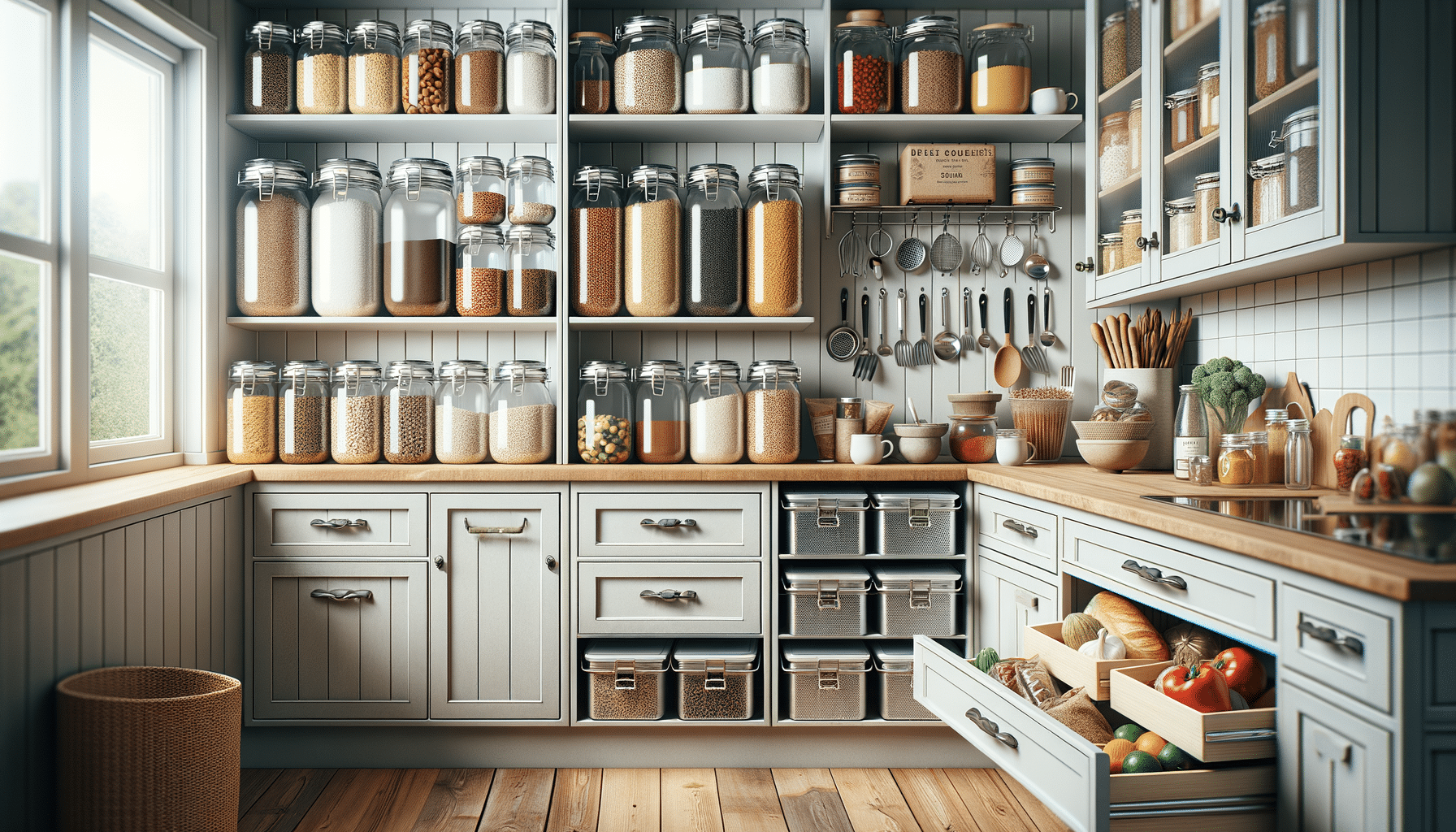
Smart Kitchen & Food Storage Ideas to Keep Things Organized
Introduction to Kitchen Storage Containers
In any kitchen, organization is key to maintaining efficiency and ensuring that meal preparation is a smooth process. Kitchen storage containers play a crucial role in this regard, offering practical solutions for keeping ingredients fresh and accessible. These containers come in various shapes and sizes, designed to store everything from spices to bulk grains. Some popular types include stackable cube containers, which maximize space in cupboards, and steel food boxes, known for their durability and ability to keep food fresh for longer periods.
Choosing the right containers can transform your kitchen into a well-organized space. Considerations such as material, size, and sealing capabilities are important when selecting containers. Glass containers, for instance, are excellent for visibility and are often preferred for storing leftovers in the fridge. Meanwhile, plastic options are lightweight and ideal for dry goods like pasta and cereals.
Incorporating a variety of kitchen storage solutions not only helps in maintaining order but also contributes to reducing food waste by keeping contents fresh and usable for longer. With the right containers, you can easily categorize and store your kitchen essentials, making cooking and meal planning a more enjoyable experience.
Effective Food Organization Techniques
Organizing food items in your kitchen is more than just about aesthetics; it’s about creating a functional space that supports your cooking habits and lifestyle. Effective food organization involves strategic placement and categorization of items, which can significantly enhance your kitchen’s efficiency.
One approach to food organization is to group similar items together. This can be done by creating dedicated zones in your pantry or cupboards for different categories such as baking supplies, snacks, canned goods, and spices. Using clear containers or labels can further aid in quickly identifying contents, saving time during meal preparation.
Consider implementing a first-in, first-out system, particularly for perishable items. This method ensures that older products are used before newer ones, minimizing food spoilage. Additionally, adjustable shelving or stackable storage solutions can help maximize vertical space, allowing for more organized and accessible storage.
By employing these techniques, you can create a streamlined kitchen environment that not only looks neat but also supports efficient cooking and reduces food waste.
Bulk Food Storage Solutions
For those who prefer buying groceries in bulk to save time and money, finding the right storage solutions is essential. Bulk food storage solutions are designed to accommodate large quantities of food items while ensuring they remain fresh and accessible.
One popular option for bulk storage is the use of large, airtight containers. These containers are perfect for storing dry goods such as rice, flour, and sugar, protecting them from moisture and pests. Stackable cube containers are particularly useful in this context, as they allow for efficient use of space in pantry shelves or cupboards.
For items that require refrigeration, consider using vacuum-sealed bags or containers. These not only save space but also extend the shelf life of perishable goods by keeping out air and moisture. Additionally, investing in a dedicated freezer can provide ample space for storing bulk-purchased meats and frozen goods.
Overall, the key to effective bulk food storage lies in choosing the right containers and utilizing space wisely. With the appropriate solutions, you can enjoy the benefits of bulk buying without compromising on organization or food quality.
Creative Ways to Utilize Kitchen Space
Maximizing kitchen space is a common challenge, especially in smaller homes or apartments. However, with a bit of creativity, you can make the most of the space you have. One effective strategy is to use vertical space by installing shelves or hanging racks. This can free up counter space and keep frequently used items within reach.
Another idea is to use cabinet doors as storage opportunities. Attaching hooks or small racks to the inside of cabinet doors can provide additional space for storing utensils, spices, or cleaning supplies. Similarly, magnetic strips can be used to hold knives or metal lids, keeping them organized and easily accessible.
Consider using multi-purpose furniture or storage solutions, such as kitchen islands with built-in storage or foldable tables that can be tucked away when not in use. These options can provide additional workspace and storage without taking up too much room.
By thinking outside the box and utilizing every available inch of space, you can create a functional and organized kitchen that meets your needs.
Conclusion: The Benefits of Smart Kitchen Storage
Investing in smart kitchen storage solutions is an investment in both time and efficiency. With the right containers and organizational strategies, you can transform your kitchen into a well-ordered space that supports your cooking endeavors and reduces food waste.
From stackable cube containers to steel food boxes, there are numerous options available to suit different needs and preferences. By implementing effective food organization techniques and utilizing creative storage solutions, you can make the most of your kitchen space and ensure that all your ingredients are fresh and accessible.
Ultimately, the benefits of smart kitchen storage extend beyond mere organization. They contribute to a more enjoyable cooking experience, allowing you to focus on creating delicious meals for yourself and your loved ones.


